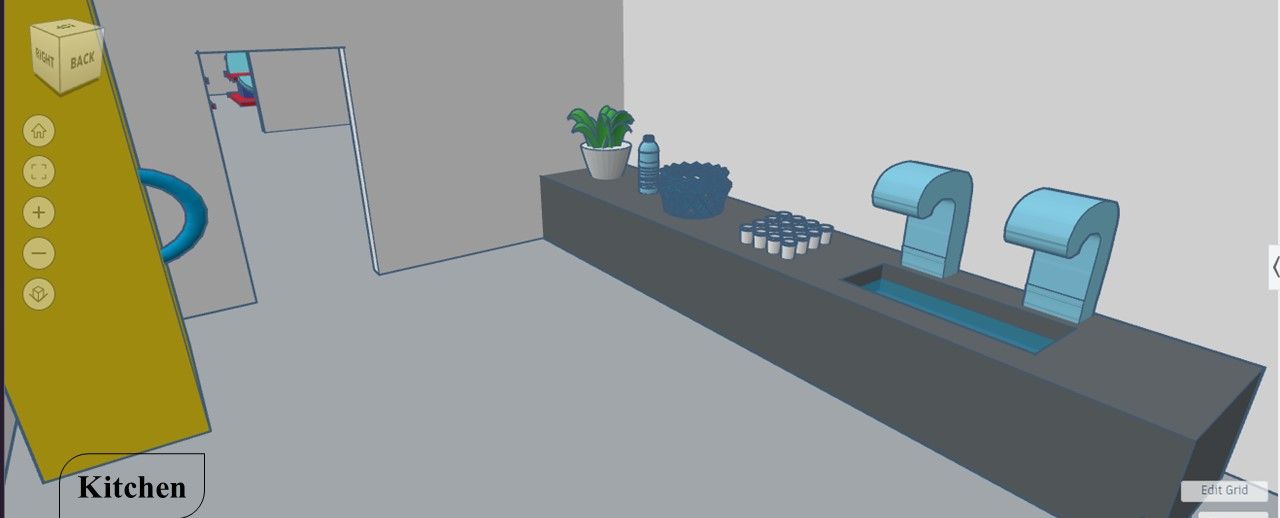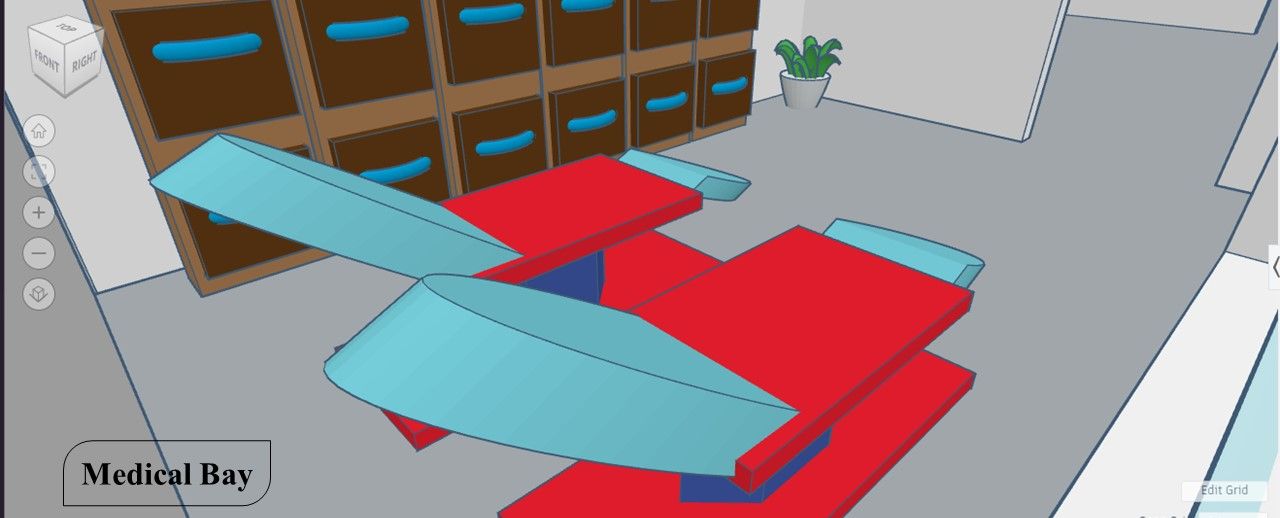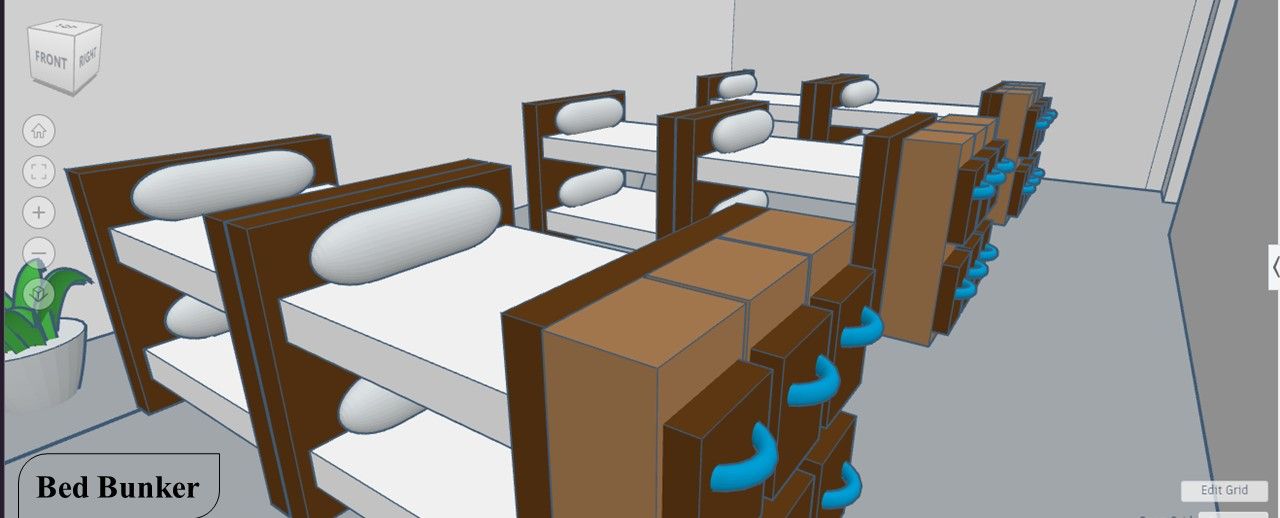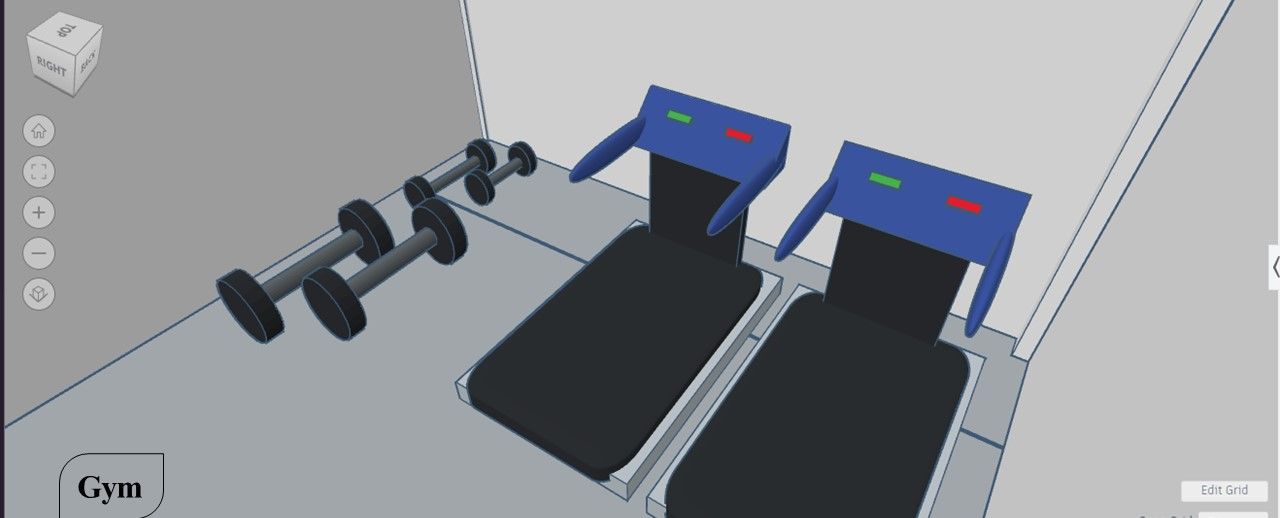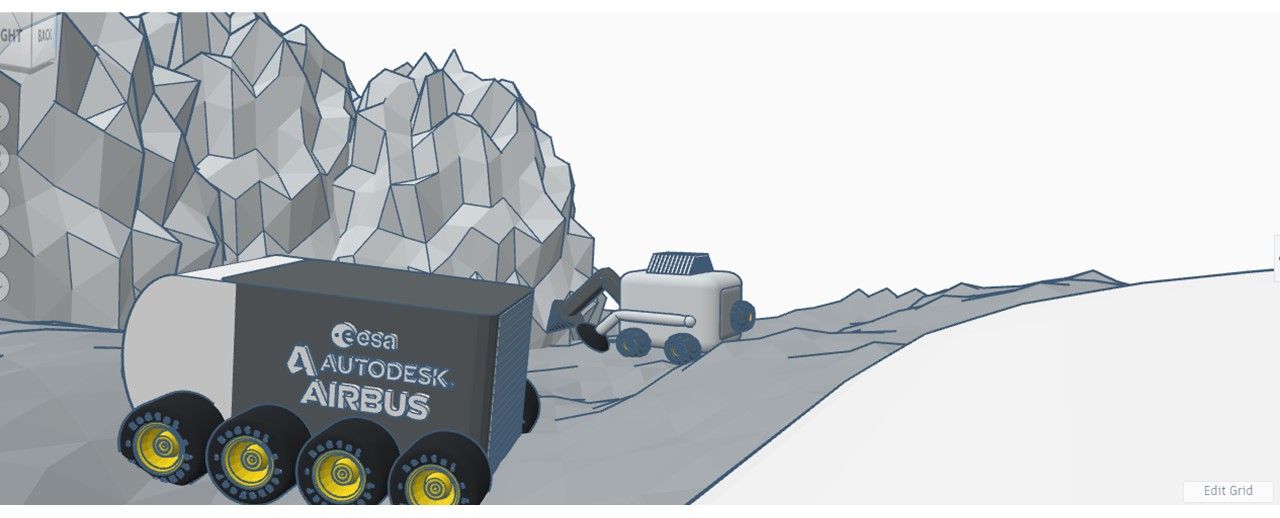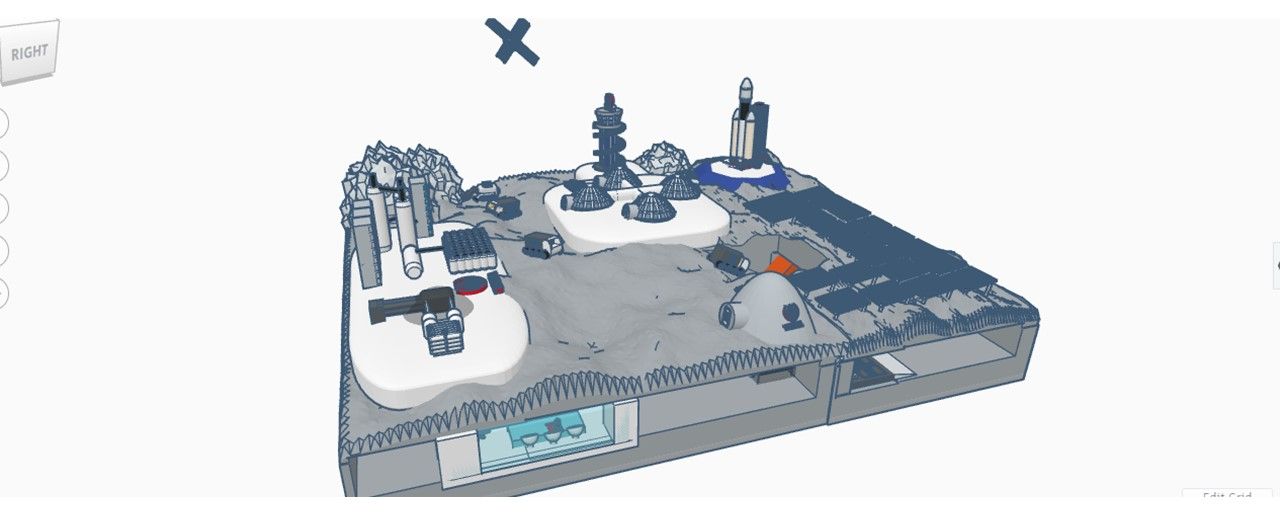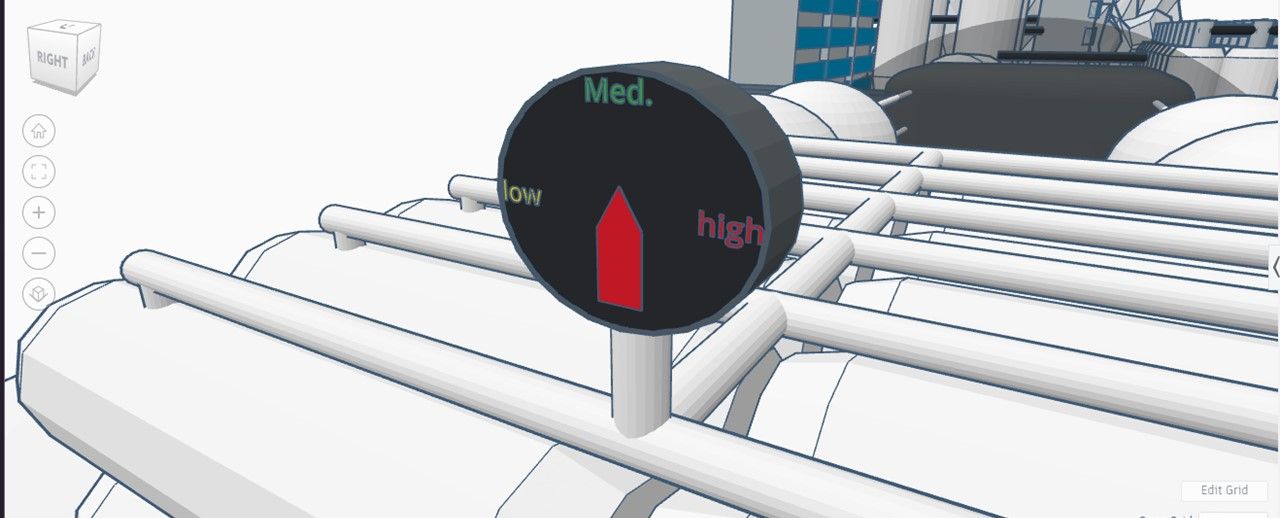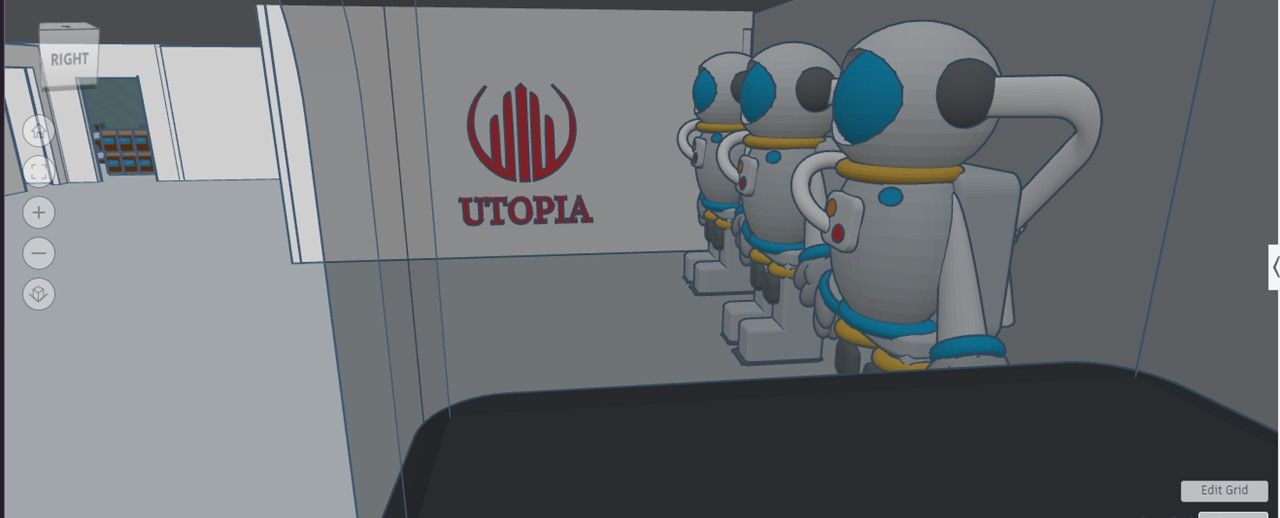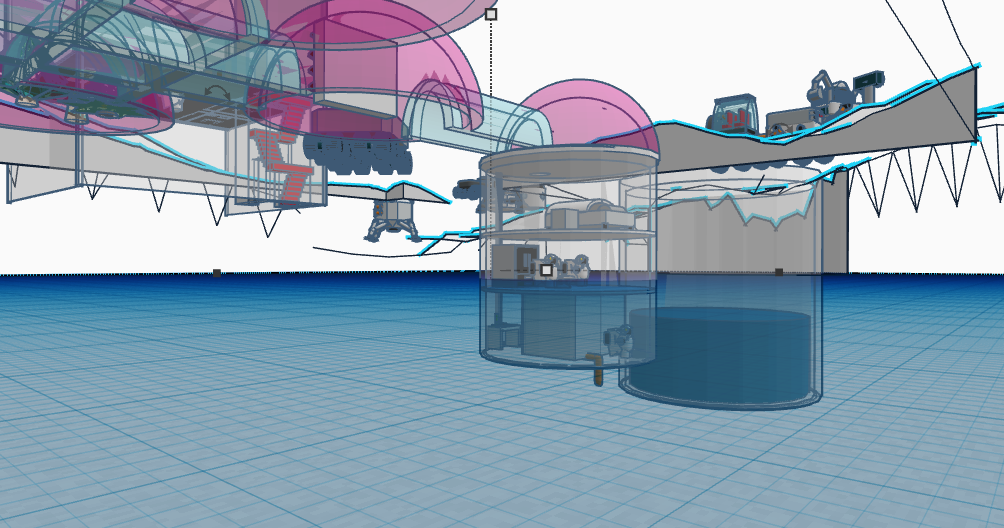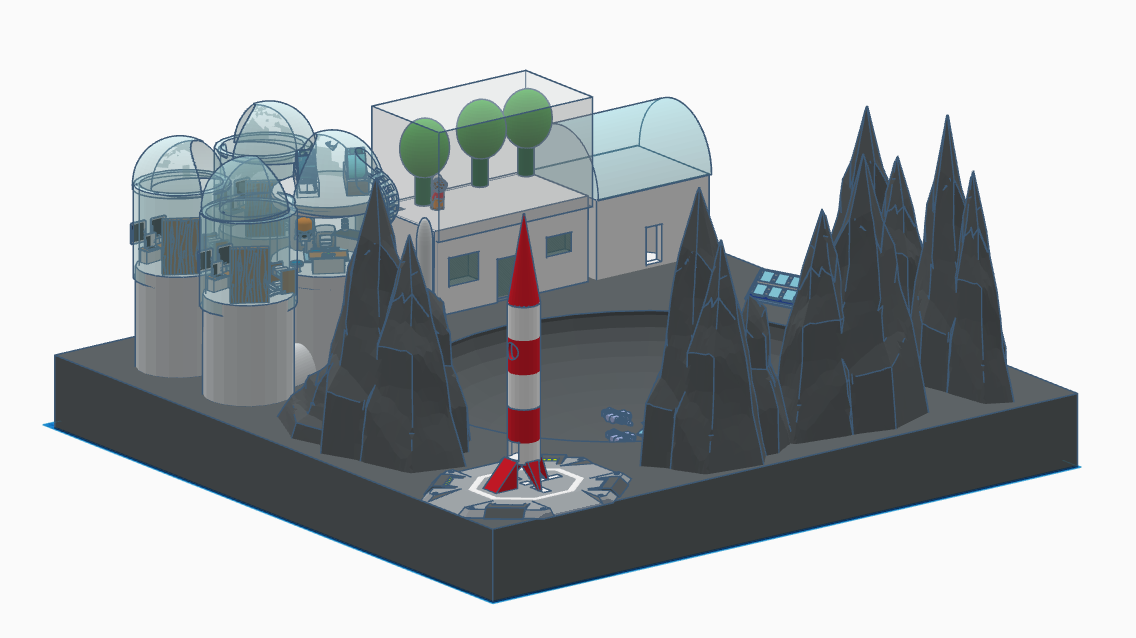Moon Camp Explorers Gallery 2021-2022
In Moon Camp Explorers each team’s mission is to 3D design a complete Moon Camp using Tinkercad. They also have to explain how they will use local resources, protect astronauts from the dangerous of space and describe the living and working facilities.
Team: Utopia
YoLabs Bangalore India 9, 8 6 / 1 Second Place – Non-ESA Member states
External link for 3d
|
Project description
Our Moon Camp is named Utopia. As the name suggests we want to dream of a happy, green and prosperous society. For example though nuclear power is straightforward to adopt but still we have kept solar as our main source of power.
Utopia is designed to support four astronauts full time and will be able to host 8 visitors. Utopia is developed in phases and every tiny detail is accounted for. Utopia is powered by solar energy directly and indirectly (the case of hydrogen fuel cells). All the rovers are fitted with options of autonomous driving, remote operation as well as manual mode. Every machine is interconnected and all parameters are monitored/controlled and displayed using 100 of tiny Raspberry PIs which are an integral part of Utopia’s Brain MAYA. Most of the Installations except water, o2 plant, watchtower and greenhouse are underground to avoid cosmic and meteoroids destruction. Also Regolith (the dirt collected during underground digging) is the source of all materials used for further construction. The charging stations and rover also work as power back units. Every Building is provided with airlocks to avoid any water/air losses and every treadmill equipped with 10 plus sensors – weight, heartbeat, temperature etc and keep records with timestamp. Maya the AI Brain of Utopia keeps a watch on every health and safety parameters and is ready to invoke necessary measures. Utopia is designed to be a happy, friendly and live habitat with lots of Hope. |
||||
|
Where do you want to build your Moon Camp?
Close to the lunar poles Why did you choose this location?
Northern rim of Peary Crater We were super confused b/w the north and south pole. While the south pole was offering good access to ice but huge variation in temperature and sun. North was not having easy access to ice. After much googling and consulting we zeroed down to the crater rim near the lunar north pole as due to
Permanently sunlit areas would provide crucial solar energy for our solar plants and solar furnaces. Less fluctuations in temperature will allow our hardware, battery and other machines to operate well and will have less breakdowns.
How do you plan to build your Mooncamp? Which materials will you use?
Utopia has been designed to sustain four astronauts and consideringt crew not well and Extra crew/guest astronauts for experiments
Phase-1 – Arrival of drillers and crushers robots which will start drilling and excavation
Phase-2 – Crushers, separators and 3D printers will start using the extracted debris to produce building and plant material.
Phase-3 – Setup of power plant to power ramps/debri conveyor and smelters. Limited gravity force and carbonyl processing & solar furnaces will be used to extract magnesium, Iron, Aluminum, titanium, silicon and lime.
Phase-4 -Giant and precision 3D printers will start building the facilities and equipment. |
||||
|
Water
|
Food
|
Electricity
|
Air
|
Protection
|
|
The location we have selected is not very far from ice. Also we have set-up a huge plant to recycle water and all buildings are airlocked to minimize loss. Rover’s mounted heated drills mine the ice. Heat ice with the exhaust heat of furnaces Now water is feeded to the water purification plant and stored in storage of 2000 liters. Weekly loss of 3-5% of water will be added. Water quality will be checked through ph and other sensors using a raspberry pi. |
Bring 60-75 days food supply from earth. Setup Greenhouse farm and grow the first crop of radish, spinach and lettuce as they are quick to grow. Hence we have four each and can support 2 astronauts. 3rd Greenhouse is for tasty food while the last one is for experimental food. Utopia kitchen is equipped with special food 3D printers to bring some variety of shapes. Lunar soil, water and organic waste will be used to grow food. |
At Utopia we are for green energy so nuclear reactors will provide only backup for emergency. To tap the solar energy efficiently we will be using efficient mono-crystalline material. This low cost and lightweight panel will allow us to generate required electricity at a faster pace . All our rovers and machines are powered by LIPO and LI-ion batteries which also provide us with electricity storage anf backup Also the hydrogen extracted during electrolysis process will be stored in compressed form to use as rocket fuel, fuel for furnace and also as fuel cells to generate electricity |
We will generate O2 by electrolysis process on water acquired by This air will be fed to various buildings which are equipped with airlocks. Also we will be having O2 candles for special emergency. (these candles are used in submarines for emergency purpose). Air quality and humidity monitored by various sensors and raspberry pi IOT systems. Any breach of threshold will place things on alarm and will suggest corrective measures. place slow speed blowers in the sleeping room and basil plants which can give very soothing effect and a bit extra 02 |
Protection from sun storm, radiation and meteoroids is a must to survive @ moon. Moon surface faces 200-1000 times more radiation than earth. That is why except for exploration tasks and watch tower all facilities are underground and covered with 1meter regolith. Also maya will be connected to Earth communication and any information related to sun storm and galaxy radiation will result in placing rovers in autonomous mode and send them to nearest safe place. Moon suits are made of radiation proof clothes. |
|
Describe a day on the Moon for one of your Moon Camp astronauts
While deciding our astronauts daily routine we will use our new time zone UT – Utopian Time. For the initial period we need to use all scarce resources, tools to the fullest and the only way we can think of is using them is work in shifts. Hence astronauts will have different timing but similar routine. The 24 hours will be divided into four major activities.
All astronauts will be trained in multitasking, though may be expert in a couple of fields. Their regular routine will be as follows (will be applicable as per their shifts)
Also most treadmills will be provided with a screen, connected to the network so they can spend longer hours or treadmills while still can look at what’s going on @ Utopia specially all control parameters related to air/ water and availability of energy Everything will be smart and connected, they will be able to control and monitor rovers/3D printers, plants from anywhere. Even they can print their fav food while on the go.
|
||||
















